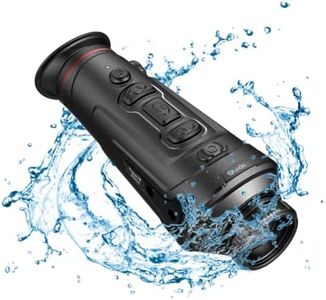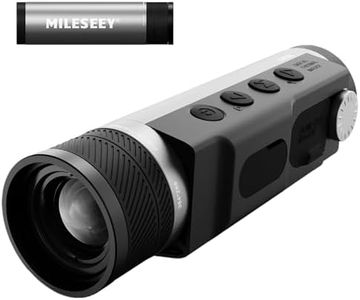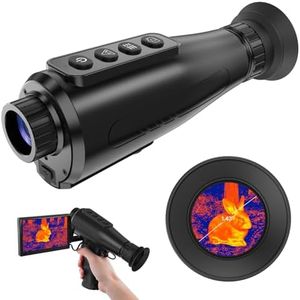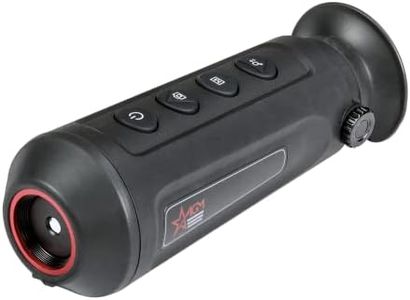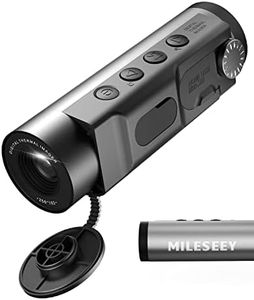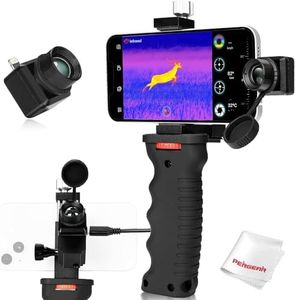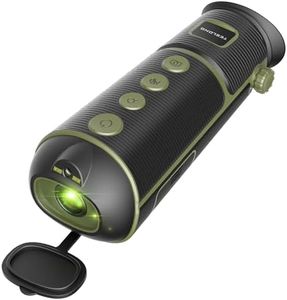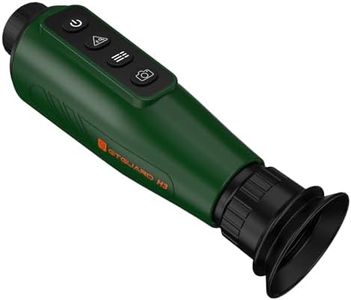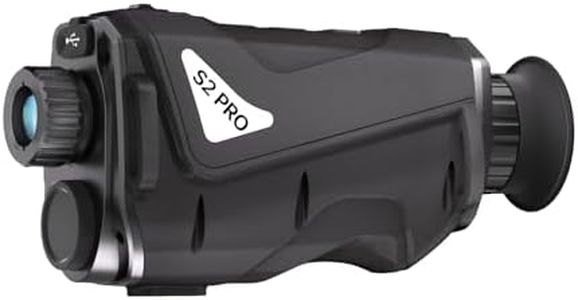We Use CookiesWe use cookies to enhance the security, performance,
functionality and for analytical and promotional activities. By continuing to browse this site you
are agreeing to our privacy policy
10 Best Thermal Monoculars
From leading brands and best sellers available on the web.Buying Guide for the Best Thermal Monoculars
Choosing a thermal monocular can be a bit overwhelming given the variety of features and specs available. The key is to consider where, when, and how you’ll be using the device—whether it's for outdoor exploration, wildlife observation, search and rescue, or personal security. By understanding the most important aspects of thermal monoculars, you can match your needs to the ideal set of features, ensuring a device that is both enjoyable and practical for your uses.ResolutionResolution refers to the number of pixels in the thermal sensor, and it greatly impacts how crisp and detailed the image appears. Higher resolution means more detail, which is useful if you want to spot smaller objects or identify animals from a distance. Resolution typically ranges from lower values like 160x120 (basic, usable for general spotting at close range), through mid-range options like 320x240 (providing a good balance for many outdoor tasks), up to higher-end choices like 640x480 or greater (offering exceptionally clear images, useful for detailed observation and professional needs). Choose a higher resolution if you require finer detail or often observe at greater distances, but for casual use or general spotting at close ranges, a basic resolution is usually sufficient.
Detection RangeDetection range tells you the maximum distance at which a monocular can detect the presence of a person or animal. This is largely influenced by the lens size and sensor quality. Shorter ranges (a few hundred yards) are good for hiking or home security in smaller areas, while longer detection ranges (up to several thousand yards) are better for open terrain, such as fields or forests. When picking the right range, consider the environment you’ll be using the monocular in most—denser woodlands typically require less range than wide-open spaces.
Refresh RateThe refresh rate measures how often the image updates per second, usually in Hertz (Hz). A common range is between 9Hz and 60Hz. Lower refresh rates (around 9Hz) can result in less smooth images, especially when tracking movement, but are sufficient for static observation or occasional use. Higher refresh rates (30Hz and up) make it easier to follow moving targets, which is helpful for wildlife watching or search and rescue situations. If you need to track fast-moving subjects, opt for a higher refresh rate; otherwise, lower rates are fine for stationary objects.
Lens Size (Objective Lens Diameter)The lens size, typically given in millimeters, affects how much infrared energy the monocular gathers and, therefore, how far it can effectively see. Larger lenses (40mm and up) gather more information and let you see farther, but they also make the device bulkier and heavier. Smaller lenses are lighter and more compact, making them easier to carry for long periods. Think about your priority—do you want maximum range and detail, or do you prefer portability and convenience? Match your choice accordingly.
Display Type and QualityThe internal display is what you actually look at when viewing through the monocular. Common types include OLED and LCOS screens, with OLED generally giving brighter, higher-contrast images. Higher screen resolution helps you see fine details provided by the sensor. For users who plan to use the device for extended periods or need clearer images in varying lighting conditions, choosing a high-quality display will offer a more comfortable and effective experience.
Battery LifeBattery life determines how long you can use the monocular on a single charge or set of batteries. Shorter battery life might be okay for quick outings, but for prolonged use—like overnight surveillance or extended wildlife observation—longer battery life is essential. Consider your usual session lengths and access to charging. If you’ll be in the field for long periods without easy charging options, opt for a model known for longer battery performance.
Durability and Weather ResistanceThermal monoculars are often used outdoors, so it’s important they are tough enough to withstand the elements. Durability covers how well the casing protects from drops or bumps, while weather resistance refers to protection against moisture and dust. Look for ratings like IP66 or IP67 for higher levels of water and dust resistance, particularly if you expect to use the device in rugged or unpredictable conditions.
